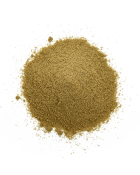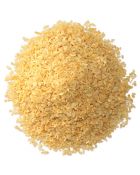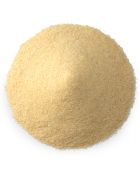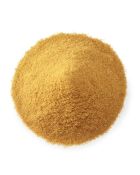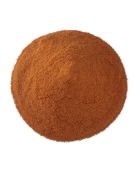
Spices
Market Update
March 2022
Dried Onion
US
Planting has finished for the 2022 crop in the majority of the regions except for Tule Lake in northern California, Oregon, and Washington. Sowing for the remaining regions will start in March and April. Overall dry onion production is expected to decrease by 7-12% compared to the previous year’s planted crop. This is primarily driven by continued drought pressures, labor availability, and input cost inflation.
Early March precipitation for California dropped below normal despite having heavy rainfall in December 2021. California reservoir levels continue to remain below average with the Shasta Reservoir being at 37% of normal levels. Overall, the Sierra Nevada snowpack at the end of January 2022 is 92% of average levels compared to 160% of average levels at the end of December 2021. The Bureau of Reclamations has announced an initial 0% water allocation for the Westlands Water District and other CVP agricultural contractors.
Labor costs continue to rise. The year-over-year Employment cost index is up 4.5% as of the end of 2021. Fertilizer and input costs have also increased sharply. A potential ban on Urea imports from Russia is likely. Diesel costs have risen by ~40% in tandem with crude oil. The ban on Russian oil imports is likely to cause significant volatility in the near to medium term and have a cascading effect on all input costs. Onion and garlic grower and manufacturing costs will remain inflationary for CY22 season and based on available information at this time, are expected to move up ~30-35% for the next contract cycle.
Egypt
Yellow Onion: Egypt’s CY21-22 Winter onion crop planting is down sharply (almost 40%) over last year due to weak pricing during 2021 and poor fresh onion exports. This has created a large supply glut in the local market. The excess crops from the CY21 summer production are keeping winter crop prices stable for the time being. and labor costs are up sharply over last year by ~40%. Overall production in the winter crop is therefore likely to be down 15-20% and prices will be higher than current levels.
White Onion: The CY22 white onion crop is planted at a similar level as CY21 (~5000MT). The crop is progressing well with no weather or disease-related risk foreseen at this time. Harvest will start towards May.
The CY22 crop has been planted in an inflationary cost environment with higher labor, fuel, and input costs together with hikes in ocean freight rates, which will lead to firmer prices compared to the last year. The war in Ukraine and its corresponding impact on Natural Gas and oil markets is likely to accentuate this impact sharply.


Other Markets (India & China)
India: Indian dehydrated onion planted acreage for CY22 is reportedly up sharply over last year (>20%). However, crop yields are expected to be 10-15% lower compared to last year due to unseasonal rains, pest attacks, and plant diseases.
CY22 crop planting has been largely done through the direct sowing model instead of the nursery and transplantation model due to higher labor costs. This can likely be one of the reasons for lower yields. A clearer picture of total production will emerge by end of Q1, 2022. The current market pricing is stable, however, shipment bottlenecks remain.
China: The CY21-22 Chinese dried onion production is also estimated to be up sharply. Prices have remained in sync with India through Q1 2022. Shipping bottlenecks continue to remain the largest problem for exports from this origin.
Future Outlook
All Origins
- Constrained onion availability in destination markets from all origins to continue through Q2, 2022
- Export shipment bottlenecks & container availability challenges from all origins unlikely to improve through 2022
- The Ukraine and Russia situation has already had a major inflationary impact on Natural Gas and Crude Oil costs globally. Crude oil is up ~25% at the time of writing this report. Ocean freight rates as well as domestic trucking costs are likely to see significant increases and in addition to more shipment delays, especially into Eastern Europe
- Utility costs are also likely to increase sharply in the coming months and this will also have cascading input cost inflation going forward
US
- Domestic shipment lead-times to remain under pressure through H1, 2022; omicron risk continues
- Domestic CPI trends likely to accentuate higher home consumption; resurgent Onion demand likely through remainder of 2022
- Inflationary pricing (+30-35% over current year) likely to continue through the next contract cycle (2022-23)
- Domestic US onion is still the most reliable bet for North American buyers from a near term availability, food safety, and specification perspective
Other Markets (India, Europe, China)
- Despite enhanced production both India and China, costs are up and weather, yield, COVID and Natural gas linked cost-push pressures and ocean freight shipping bottlenecks remain; destination availability is likely to be erratic till shipping situation improves by end of 2022
- Large divergence likely in FOB origin and EXW Destination spot prices. Destination spot premiums likely to increase till supplies improve
Dried Garlic
US
Planting for the 2022 crop is fully completed and industry acreage is estimated to be slightly higher than levels planted in the previous season. Crop emergence has been on a normal trajectory and the weather has been cooperative as of this point.
Overall, inventories across most fractions are suited to meet domestic demand although at higher prices. Similar to US onion, US garlic is also impacted by weather, water, and grower cost inflation. 2022 market pricing reflects these trends.
China
Garlic planting for the 2022 crop is complete and estimated crop acreage is 3-5% higher than the last year. However, delayed planting due to unseasonal rains in November 2021, followed by extremely cold weather and snowfall in main producing regions, has created serious concerns about a potential drop in crop yields in the CY22 harvest. A better picture will emerge by end of Q1,2022.
China has reported a rapid increase in cases of the omicron variant which has forced preventive lockdowns in Shenzen and Jilin. Chinese authorities tightened anti-virus controls at ports in March, raising the risk of trade disruptions after some auto and electronics factories shut down as the government fights coronavirus outbreaks. Currently, garlic shipments are not affected, but the situation needs to be monitored carefully.
Future Outlook
US
- US dried garlic prices are likely to move up progressively by 25-20% through the next season driven primarily by raw material, labor, fuel, utilities, and COVID cost-push inflation
- Minced garlic and extra-low micro availability across all fractions will remain tight in the near to medium term
- Toasting and irradiation capacities are operating at 100% utilization and increased demand will drive up lead times and costs
China
- Flake pricing is stable for the moment but could increase sharply if crop yields are seen dropping at the end of March 2022
- The weather and crop emergence in Chinese garlic growing regions through the rest of the season needs to be watched carefully as it will have a critical influence on the crop yields, and this could have a major impact on grower costs and corresponding garlic prices in the CY22 crop.
- Tight container availability, skyrocketing freight rates, and delayed shipments, especially from Omicron-linked lockdowns - are likely to continue to roil markets through the rest of 2022. Large divergence likely in FOB origin and EXW Destination spot prices as a result. Destination spot premiums are likely to increase till supplies improve. Supply diversification and extended coverage are strongly recommended
Indian Spices
Chilli
Currently, the crop is at the harvesting stage. Our first harvest was completed across all the regions and the second harvest is in progress. Pest and disease infestation led to a sharp drop in the CY22 yield when compared to last year. This has led to lower production despite increasing our planted acreage over the previous season. The overall quality of the crop is poor compared to normal yields. The availability of pesticide residue compliant crops has decreased this year. Prices have increased by 5-10% during February due to increased domestic demand. The current export demand has been weak so far. CY22 supply is expected to be tight especially for good quality and pesticide residue compliant grade crops.
Turmeric
The crop is at the harvesting stage. CY22 yield is expected to be lower compared to normal due to plant diseases. New crop arrivals are expected to improve during March. Prices have remained stable during February due to weak domestic and export demand.
Cumin & Coriander
Cumin: Our early sown crop is at the harvesting stage and while the late sown crop is at the maturation stage. Due to sudden changes in climatic conditions, the early sown crop is damaged due to blight. This has led to a significant drop in the yield for certain affected fields. CY22 production is expected to be lower compared to last year due to the fewer acreage planted.
Coriander: Crops are at the maturation stage. CY22 production is expected to be lower compared to last year due to less acreage planted. Harvest season is anticipated to start during the middle of March. Prices for the crop have increased by 10% due to the expectation of lower crop availability.
Future Outlook
- Chilli: Prices are expected to move up from current levels
- Turmeric: Prices are expected to remain stable
- Cumin & Coriander: Prices are expected to move up from current levels
Chiles
US - Paprika/Red Chiles
Competitive crops with a higher margin for growers continue to be the biggest challenge. However, our Ag team has been able to cover with contracts for CY22. Inflation and wage increases in both areas have been reflected in the contracted prices, which shall keep the supply chain stable during CY22.
US Green Chiles / Jalapenos
The harvest in February was strong as deliveries mimicked late January with yields that were stronger than expected. The facility was able to consume these increased yields without an issue. A late cool streak of the weather delayed the harvest of the second crop as conditions have stalled the maturity of the fruit. Deliveries will resume around the second week of March.
Jalapeno deliveries continued to be strong through February. The deliveries kept the facility above contracted tonnage. With Jalapeno mirroring green chile conditions, deliveries have slowed down but have not stopped entirely.
China - Paprika
Pricing is still high coming out of the Chinese New Year. There is a lack of availability for good color value and low moisture raw material. Pricing is being pressured by the higher demand for Chinese Chili due to the crop situation with Indian Chilli.
Peru
There continues to be a complicated scenario for this year´s crop with high demand and low supply.
Future Outlook
- Fertilizer and crop inputs are rising at an alarming rate, without any relief in the near future
- Overall tight global supply and increased demand will continue to keep prices higher through 2022
- Labor issues are still forecasted to be a concern as we move into our 2022 spring and summer crops
Vietnam Spices
Pepper
Vietnam pepper harvest is delayed more than normal this year. However, harvesting has started in a few regions but at a relatively slow pace. This is expected to increase in the next three to four weeks. The main flow of crops in Cambodia will increase towards the end of March as the harvesting begins in the region. We are observing better crop health in Brazil and Indonesia this year. Pepper harvesting in Brazil and Indonesia will begin in May and July, respectively.
Nutmeg & Cassia
Nutmeg harvesting has commenced in Indonesia and the flow of the crop is anticipated to pick up in the middle of March. Rainstorms continue to hamper the flows of crops into the trading centers. In Central and Northern Vietnam, the cassia harvest season is expected to begin by the end of March.
Future Outlook
- Pepper: Prices are stable as harvesting season picks up in Vietnam
- Nutmeg: The flow of the crop is anticipated to pick up in the middle of March
- Cassia: Crop is expected to trade in a range-bound manner for the next few months
Shop Spices

